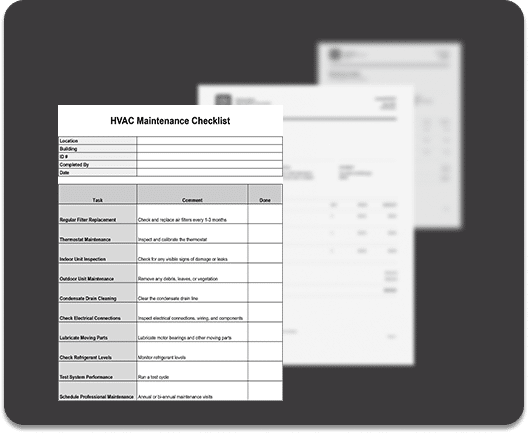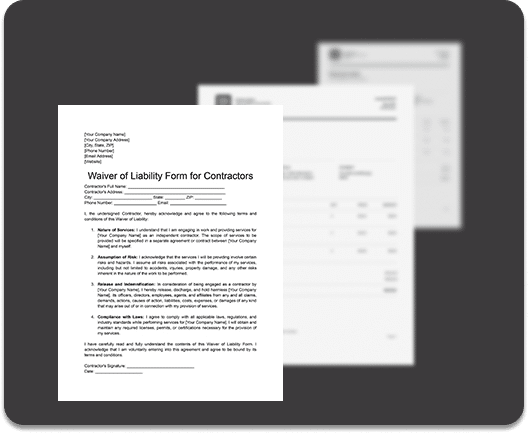The below is an article and infographics from carparts.com, on the issue of “How Much of Your Life is Wasted in Traffic? America’s 10 Most and Least Congested Cities“
The main points are:
- Enormous amount of economic and health costs arise from traffic congestion.
- Improvements in transportation infrastructure and technological breakthroughs may reduce such costs.
According to the US Census Bureau, the average American spends about 26.4 minutes driving to work every day. It may not sound too bad for a one-way trip, but a closer look at the numbers tells a different story. More than a third of working Americans spend between 30 to over 60 minutes driving to work. You may be one of more than 53 million people spending a total of two to four weeks out of the year stuck on the road.
Why are we spending so much time in traffic? The US Department of Transportation data shows that the distance people travel to go to work hasn’t changed. In fact, we’re driving less and making fewer trips. So why is total commute time still rising?
Traffic congestion is a road condition wherein the demand for road space exceeds capacity. This results in vehicle movement that is much slower than regular or ‘’free-flow” speeds. Some argue that road congestion is a sign of a thriving economy but there is no denying its negative impact on daily life.
Time lost is the most obvious effect of traffic congestion, but what many don’t realize is that its impact extends to other aspects of daily living. Different cities experience varying levels of road congestion. In this article, we’ll put America’s least and most congested cities side by side to better understand its impact on a larger scale.
The data provided below was taken from the 2018 INRIX Global Traffic Scorecard, the US Department of Transportation guidelines for Time Travel Savings, and the Bureau of Transport Statistics Travel Time Index. Rankings were derived from the top 63 urban areas in the US based on road network density.
We will also explore the overall effect of traffic congestion on the everyday American citizen. We’ll take a closer look at its economic, health, and environmental costs. Apart from presenting current conditions, we will also look at how conditions are expected to change in the future.
Construction, road accidents, and aging public transportation systems are some of the obvious sources of traffic congestion. Beyond these three, there are several factors that cause frequent gridlocks.
1. Number of licensed drivers vs. highway system growth
According to the DoT’s annual report, the number of trips people are making hasn’t significantly changed, so has the average distance people travel to and from common destinations such as school or work. While distance and trip frequency aren’t to blame, the next factor that we should look at is the rising number of licensed drivers.
Every year, the number of licensed drivers continue to increase while the growth of our highway systems remains stagnant. Hardly any new roads are being built—and construction on existing roads are often limited to repairs or widening which aren’t enough to accommodate the number of vehicles on the road.
There is also a growing trend of people over 65 who continue to work past the retirement age. By delaying their retirement and continuing to drive to work, the number of vehicles on the road during peak congestion hours remains high.
2. Increasing frequency of extreme weather events
Most urban cities develop around coastal areas. While these make for scenic drives, these locations are highly prone to weather events. Due to rapid climate change, strong hurricanes and snowstorms are becoming more frequent. This, in turn, results in more frequent road closures that last longer and extend over days.
3. Evolving behavior of American drivers
Trip-chaining is a newly observed driving behavior wherein people make multiple stops in one trip instead of making short multiple trips throughout the day. For example, after dropping off the kids at school you may decide to go straight to grocery shopping and get your nails done afterwards.
While in theory, this should help reduce congestion by limiting the number of trips you’re making, it actually has the opposite effect. Trip-chaining affects your departure and arrival time, often extending your trip into peak congestion hours.
Another observed phenomenon is crowding in urban cities. While there is a lower rate of vehicle ownership among people living in big cities, a recent report from the Bureau of Transportation Studies shows that without their own vehicles, city dwellers prefer ride-hailing apps over mass transit as their top transportation alternative.
We’ve seen several reports that put a number value on the cost of congestion, but it may not be clear how these government agencies and research groups have come up with these numbers. To put it simply, these figures are computed based on income.
The US Department of Transportation has previously published their guidelines for computing the value of time savings on the road. We won’t go into the formula itself, but we’ll go over the main factors that are considered in these calculations. Trips are basically classified into two: personal travel and business travel.
- Personal travel – most of our vehicle trips fall under personal travel. This includes commuting to and from work, dropping kids off to school, and running household errands. The cost of these personal trips is based on the city’s median household income. Recreational activities also fall under this trip classification since these are lost opportunities to engage in activities that we would have been willing to pay for.
- Business travel – refers to trips that are paid for regardless of the driver being stuck in traffic. These trips apply to commercial drivers and business travelers who can work on their laptops or discuss with colleagues who are travelling with them. The cost of these trips mainly affects the employer. It is computed based on median wages and benefits. Even if you are not a commercial driver or business traveler, the increased costs of doing business is passed on to households through higher prices for purchased goods and services.
Business costs
Business costs refer refer mainly to freight transportation. One thing to note is that reduced driver productivity may or may not have a significant impact on the cost of freight movement. It is difficult to come up with definitive freight costs because there are several factors that affect estimates.
How quickly will the transported products become obsolete if not delivered on time? Are trucks carrying perishable food products or non-perishable household items? Will production be delayed without the timely delivery of parts from one location to another? A more thorough study of freight transportation costs in each city is needed to fully approximate the cost of congestion for businesses.
Job accessibility
Jobs are the most significant destination apart from our homes. For 86% of Americans, the most widely used mode of commute remainscars, trucks, and other private vehicles. During peak congestion hours, the number of accessible jobs within a 30-minute drive decreases by more than 50% on average. Imagine having access to these jobs and more, if only traffic at peak hours ran at free-flow speeds.
Due to road congestion, people are not only forced to drive longer to work, but also need to allot extra time out of their day to avoid rush hour traffic. This means people have less time to rest and more time is added on top of the actual commute in order to clock in to work on time.
The accessibility of workplaces also has an impact on the productivity of businesses. Studies show that the longer the commute, the more likely a person is to call in sick to work.
The state of our environment and our health is undeniably linked. The Environmental Protection Agency or EPA has identified traffic congestion as one of the main causes for diminished quality of life and a major source of air, water, and noise pollution.
Premature death by heart attack and stroke
Vehicle emissions account for a third of the overall observed Fine Particulate Matter or FPM in the air. This type of air pollutant is even smaller than the width of human hair. Not only does exposure to this pollutant lead to respiratory illness such as asthma attacks, it is also linked to cardiovascular disease.
Sitting in gridlocks and increased exposure to this pollutant puts drivers at higher risk for fatal heart attack- and stroke-. Harvard Public Health predicts as much as 1,600 premature deaths linked to this pollutant by 2020.
Effects on roadside communities
The impact of traffic congestion isn’t limited to vehicle drivers alone. People living in communities surrounded by congested road networks also feel its negative effects on their health.
Impaired cognitive development in children
The American Psychological Association has found that exposure to air pollution negatively affects the brain development of children. A pregnant mother’s exposure to high levels of air pollutants can cause the unborn child to exhibit attention problems, and symptoms of anxiety and depression later in life.
In school, children living near congested roads score lower on memory tests. They also typically have lower verbal and nonverbal IQ than their peers. This is a problem, considering that 2/3 of public schools are located in the most polluted areas of their districts.
Effect of road traffic noise on mental health
Being used to the noise caused by road traffic does not diminish its negative impact on your mental well-being. Noise as low as 42-decibels, as soft as a bird call, can already interrupt your sleep schedule. Extended exposure to sound louder than 50 decibels, comparable to restaurant chatter, increases your risk of heart attack. Every 10-decibel increase adds to this risk by 12%.
The sound of a moving car 25-feet away is enough to decrease sleep quality and cause feelings of fatigue and headaches even after a full night’s rest. According to the World Health Organization, people living in areas with high traffic noise are 25% more likely to exhibit symptoms of depression.
Acidification of lakes and streams
Air pollution also contributes to water pollution, resulting in damage to our ecosystems. Air pollutants cause the buildup of acid deposits on water systems. Trapped pollutants in lakes and streams are linked to the death of aquatic organisms and other species. Acidified waters cause these organisms to develop calcium deficiencies that cause their bodies and eggs to be brittle. It also impairs the ability of fish gills to extract oxygen from the water.
By 2030, at least 281 million vehicles are expected to be on the road in the USA alone. Transport experts predict a 7% increase in annual time wasted in congestion within a decade from now. This isn’t surprising, considering that the number of licensed drivers is expected to continue growing.
Grim as this forecast may seem, knowledge of these numbers presents us with the opportunity to think of new ways to manage and reduce traffic congestion in America’s busiest corridors. Here are some strategies that have been suggested by transport experts to combat frequent gridlocks.
1. Improvement of transportation alternatives
The expansion and improvement of existing public transport infrastructure should provide Americans with viable alternatives to using cars or even ride-hailing apps. The challenge here is creating a public transport experience that is reliable, convenient, and free from delays.
2. Congestion pricing and lane-switching
Congestion pricing is a scheme wherein toll fees are enforced on busy roads during peak congestion hours. In theory, this should reduce the number of vehicles during rush hour and encourage people to plan their trips at other hours of the day.
Lane-switching, on the other hand, is a scheme which allows opposite lanes to be switched to the other direction to ease vehicle queues during rush hour traffic.
3. Carpooling lanes
The promotion of carpooling lanes should help reduce the number of cars on roads during peak periods.
4. Telecommuting
Remote work or telecommuting can also help address road congestion during peak hours. The number of people driving to work can be reduced by encouraging employers to provide flexible hours and work arrangements. However, this will require greater access to high-speed internet connectivity.
5. Real-time traffic management technology
Traffic management technology will only get better with time. In a few years, we should be able to use data to better manage road capacity. Traffic lights should become sensitive to real-time traffic conditions. The Internet of Things may help authorities become quicker in responding to road accidents, minimizing accident-related congestion.
Outlining these strategies is just the first step in reducing traffic congestion. It is important for us to take a closer look at the specific needs of each city and area, and from there, craft solutions that will hopefully cut down our time stuck on the road.


![[Policy Cost Benefit Analysis] How Much of Your Life is Wasted in Traffic? America’s 10 Most and Least Congested Cities – Asianpolyglotview](https://asianpolyglotview.files.wordpress.com/2023/05/traffic-congestion.jpg)
















